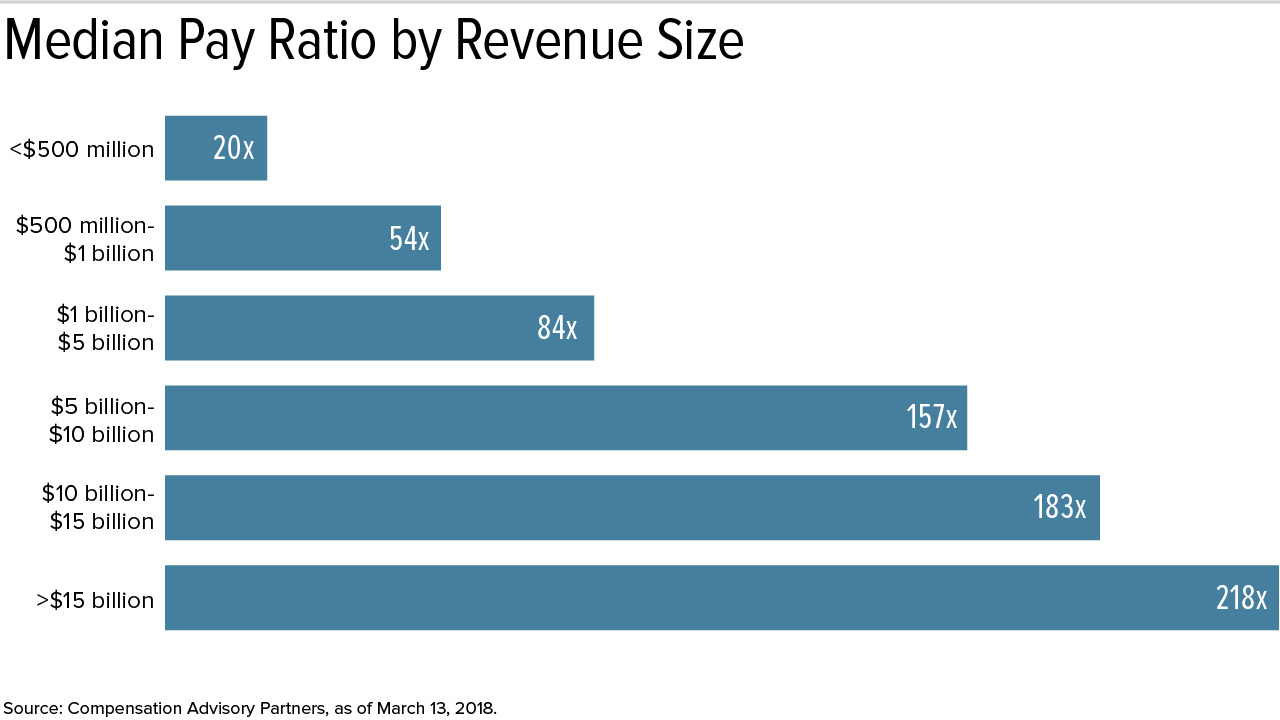CEO Pay Ratio Disclosures Have Begun, Putting Morale at Risk
Workers also will see if they are paid more or less than the median employee

Publicly traded U.S. companies have started to disclose how the pay of their CEOs compares to the compensation of their median employees (the so-called "pay ratio"). The disclosure is required, beginning this year, by the Dodd-Frank financial reform act.
"We are now in the throes of the first proxy season in which U.S. public companies are required to disclose their CEO-to-median-employee pay ratios," and a significant number of proxy statements with the new disclosure are now publicly available, said Deb Lifshey, managing director of Pearl Meyer, a pay consultancy based in New York City.
The firm's Pay Ratio Watch webpage is tracking and reporting pay-ratio data from employer proxy statements by industry and size, and Lifshey commented on the findings as of mid-March.
Magnitude of Pay Ratios
Overall, "the ratios are lower than forecasted, and so far the average CEO pay as compared with median-employee pay is in the 100-to-1 to 120-to-1 range," Lifshey pointed out. In other words, the CEO makes $100 to $120 for every dollar the typical employee is paid.
A March 13 report by New York City-based pay consultancy Compensation Advisory Partners (CAP) found that the median pay ratio disclosed so far was 87 times median-employee pay, based on proxy statements the firm analyzed.
(Click on graphics to view in a separate window.)
CAP also found that the pay ratio correlates with company size, with larger companies disclosing higher ratios. "The median ratio in our sample of 150 companies ranges from 20x [times median-employee pay] for companies with revenue less than $500 million to 218x for companies with revenue greater than $15 billion," the report stated.
"CEO pay varies greatly depending on the size and complexity of the organization," while "employee pay has less variability since it reflects the job function and does not vary significantly based on the size of the organization," the analysts at CAP noted.
[SHRM members-only toolkit: Designing Executive Compensation Plans]
Addressing Employee Morale
It’s now not only easier for many workers to compare their CEOs pay with their own, but to see how their pay compares with the typical employee at their company and its competitors.
"Employees will see quickly if they are paid more or less than the median employee, not only at your company but also at other organizations within the same industry or geography. This information may change their perceptions with regard to their current compensation," which could impact productivity and job satisfaction and lead to retention issues, said Donna Westervelt, a principal at Conduent HR Services in New York City.
To manage potential reactions from employees, she advised employers to consider these questions:
- What do employees know about the company's compensation philosophy and how their pay is established? Westervelt recommended putting in place a clearly worded employee value proposition or total rewards statement to shift the focus beyond pay.
- Have you prepared managers to respond to questions they receive? As first-line communicators, managers are often viewed as the most trustworthy source of information for employees, she noted. Ensure that they're comfortable talking about career and learning opportunities to help employees grow in their careers and increase their pay.
In addition, "Think about groups that may have unique concerns about the pay-ratio disclosure," and what special communications needs may they have, Westervelt advised. Some examples are:
- Employees with a similar job title to that of the median employee.
- Groups that have employees paid on both sides of the median.
- Groups that have expressed interest in pay transparency or pay equity, such as employees within collective bargaining units.
"Remember that the CEO pay ratio isn't a one-time disclosure," Westervelt pointed out. "In future years, the focus may shift toward year-over-year changes in the ratio and the compensation of the median employee."
Even if the CEO pay-ratio disclosure doesn't apply to your company, organizations should be prepared to respond to questions about CEO and median-employee compensation in light of news reports that employees might see, she said.
Was this article useful? SHRM offers thousands of tools, templates and other exclusive member benefits, including compliance updates, sample policies, HR expert advice, education discounts, a growing online member community and much more. Join/Renew Now and let SHRM help you work smarter.
An organization run by AI is not a futuristic concept. Such technology is already a part of many workplaces and will continue to shape the labor market and HR. Here's how employers and employees can successfully manage generative AI and other AI-powered systems.





